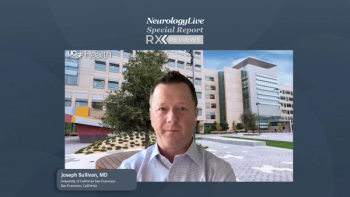
Dose-Dependent Correlation Observed Between Prenatal Valproate and Risk of Autism
Using more than 4 million eligible pregnancies, results suggest no substantially increased risk of autism spectrum disorder after prenatal exposure to either topiramate or lamotrigine.
A large US nationwide cohort study published in the New England Journal of Medicine found higher rates of autism spectrum disorder (ASD) among children prenatally exposed to antiseizure medications (ASMs) topiramate, lamotrigine, and valproate. This association was substantially attenuated for topiramate and lamotrigine after adjusting for indication and other confounders, whereas an increased risk remained for valproate.1
Using 2 health care utilization US-based databases, 4,292,539 eligible pregnancies from 2000 to 2020 were identified, 4,199,796 of whom had not been exposed to ASMs. Among 28,952 women with a recorded epilepsy diagnosis, 1030 had at least 1 dispensation during the second half of pregnancy for topiramate, 800 for valproate, and 4205 for lamotrigine; 8815 did not have dispensations for any ASMs in the 90 days before and during pregnancy. Patients were followed up for a median of 2 years, although more than 400,000 pregnancies were followed for at least 8 years.
Led by Sonia Hernandez-Diaz, MD, DrPH, a professor of epidemiology at the Harvard T.H. Chan School of Public Health, the cumulative incidence of ASM at 8 years of age among children not exposed to ASMs was 1.89 (95% CI, 1.87-1.92) in the full population. This slightly increased incidence was observed when restricting analyses to mothers with epilepsy. For this group specifically, the crude cumulative incidence of ASD at 8 years of age was 4.21% (95% CI, 3.27-5.16) with no exposure to ASM, 6.15% (95% CI, 2.98-9.31) with exposure to topiramate, 10.51% (95% CI, 6.78-14.24) with exposure to valproate, and 4.08% (95% CI, 2.75-5.41) with exposure to lamotrigine.
Investigators identified several broad, potential confounders, including demographic characteristics, maternal mental health and neurologic conditions other than epilepsy (e.g. bipolar disorder, depression, anxiety, and migraine), other potential indications (e.g. weight loss), concomitant medications, lifestyle factors, maternal coexisting conditions, and health care use. Crude and weighted cumulative incidence of diagnosis of ASD at 8 years of age was estimated for each exposure group with the use of the Kaplan-Meier method. Propensity score overlap weighting was used to adjust for measured baseline confounders when each ASM was compared with the reference group.
READ MORE:
Within the group with maternal epilepsy, the weighted average hazard ratios as compared with no exposure to ASM were 0.96 (95% CI, 0.56-1.65) with exposure to topiramate, 2.67 (95% CI, 1.69-4.20) with exposure to valproate, and 1.00 (95% CI, 0.69-1.46) with exposure to lamotrigine. In sensitivity analyses, findings for the 3 ASMs were materially unchanged when analyses were limited to women with more than 1 dispensing late in pregnancy or a dispensing in the third trimester. Analyses that applied censoring weights or excluded children with major congenital malformations also yielded similar results.
"The reasons for the higher risk of neurodevelopmental disorders among children when the mother has an indication for treatment with antiseizure medications are not well delineated," the study authors wrote. "Explanations may include shared genetic disposition for the maternal neuropsychiatric indication and the child’s disorder, an effect of maternal illness during childhood on the child’s development, or differential surveillance or diagnosis of neurodevelopmental disorders when the mother used antiseizure medications during pregnancy and the assessments are unblinded."
Hernandez-Diaz et al continued on by noting that valproate may interfere with neurotransmission critical for cell migration and differentiation as well as may induce neuronal apoptosis during the synaptogenesis period. "A common causal mechanism for teratogenicity and fetal neurotoxicity would explain why valproate carries the strongest risks for both. It would also predict some neurotoxic effects for topiramate, given its lower teratogenic potential. However, topiramate was not associated with increased neuronal apoptosis in rodents," they wrote.
In secondary analyses, topiramate, whether used as a monotherapy, in higher and lower doses, and with exposures early in pregnancy with or without discontinuation, were consistent with previous findings of no substantive increase in ASD. Similar results were found for lamotrigine. As compared with no exposure to ASM, HRs associated with in utero valproate exposure materialized higher with the use of higher doses and lower for exposure only early in pregnancy, although estimates were imprecise.
REFERENCE
1. Hernandez-Diaz S, Straub L, Bateman BT, et al. Risk of autism after prenatal topiramate, valproate, or lamotrigine exposure. NEJM. 2024;390:1069-1079. doi:10.1056/NEJMoa2309359
Newsletter
Keep your finger on the pulse of neurology—subscribe to NeurologyLive for expert interviews, new data, and breakthrough treatment updates.


























